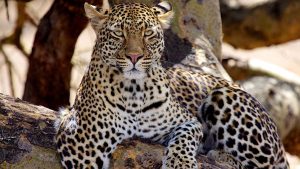Mkomazi National Park
Set below the verdant slopes of the spectacular Usambara and Pare Eastern Arc Mountain Ranges and overseen by the iconic snow-capped peak of Kilimanjaro, Mkomazi is a virgin breathtaking beauty exhibiting unique natural treasures and immense sense of space – which adds to the fulfilment of high visitor’s enjoyment expectations – a much needed bridge between northern circuit and coastal attractions.
Every day, thousands of people pass within a few kilometres of Mkomazi on one of Tanzania’s busiest highways. These and the northern circuit safari-goers are now most welcomed to discover the treasures of this wedge of hilly semi-arid savannah – home of large herds of giraffe, eland, hartebeest, zebra, buffalo and elephant.
Mkomazi is a vital refuge for two highly endangered species, the charismatic black rhino and the sociable African wild dog, both of which were successfully reintroduced in the 1990s. Nomadic by nature, wild dogs might be seen almost anywhere in the park, however, the black rhino is restricted to a fenced sanctuary, ensuring their safe keeping for the enjoyment and prosperity of future generations.
Mkomazi supports several dry–country specialist species that are rare elsewhere in Tanzania; these include the spectacular fringe-eared oryx, with its long back–sweeping horns, and the handsome spiral-horned lesser kudu. Oddest of all is the gerenuk, a gazelle distinguished by its slender neck, bizarre alien-like head, and having the habit of standing tall on its hind legs as it stretches for acacia leaves that other browsers cannot reach.
A game reserve since 1951, this new National Park takes its name from a word from Pare tribe denoting “scoop of water”, referring to little water. It is a fantastic destination for birdwatchers, with more than 450 avian species recorded, among them are the dry–country endemics such as the cobalt–chested vulturine guinea-fowl, other large ground birds such as ostrich, kori bustard, secretary bird, ground hornbill and some migratory species including the Eurasian roller.
Location: Northern Tanzania split between Kilimanjaro and Tanga administrative regions. The park borders on the west the Tsavo National Park in Kenya. The Zange entrance gate lies 112 km (69 miles) from Moshi, 550 km (341 miles) from Mwalimu J. K. Nyerere International Airport – Dar es Salaam, 142 km (88.7 miles) from Kilimanjaro International Airport, 120 km (75 miles) from Kilimanjaro National Park and 6 km (3.7 miles) from the town of Same.



